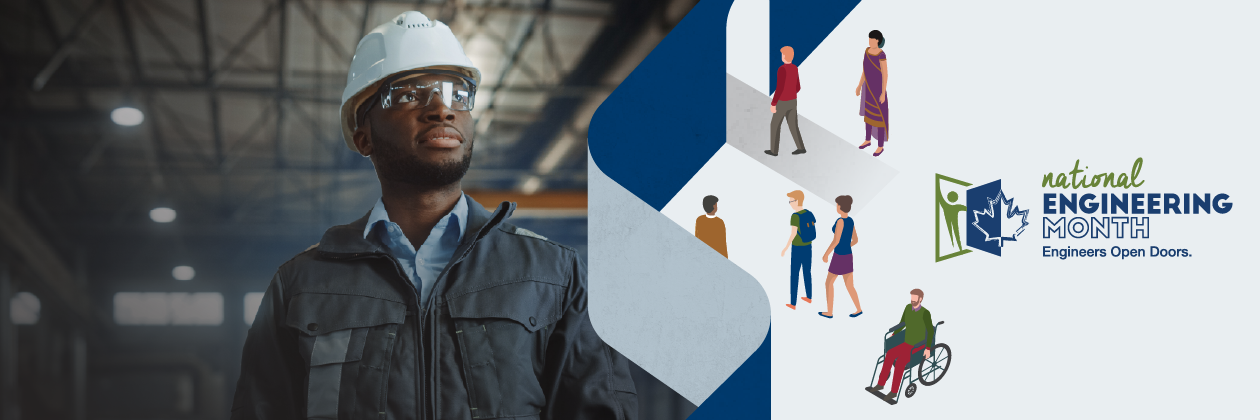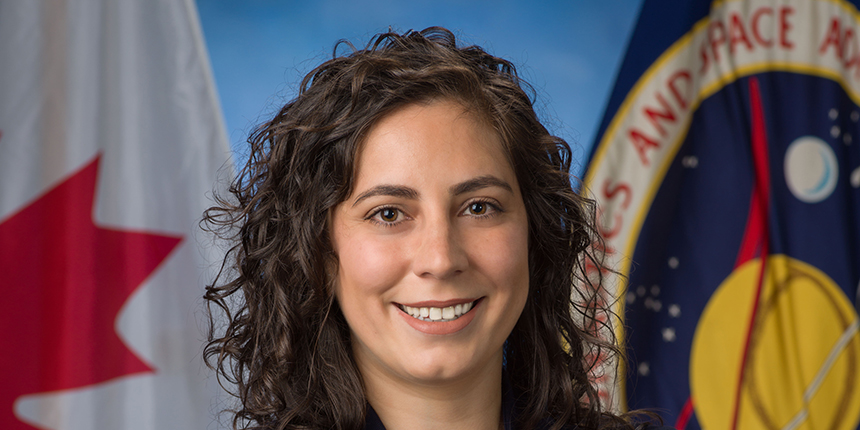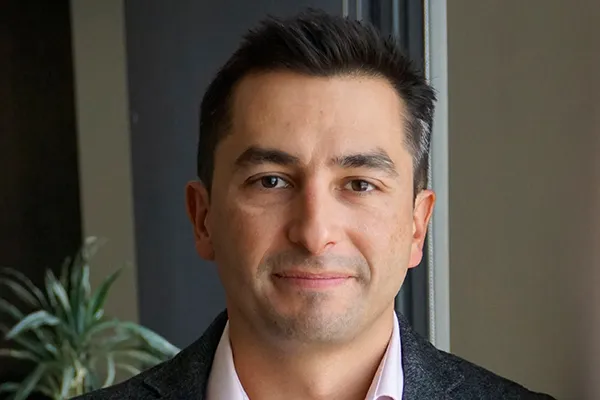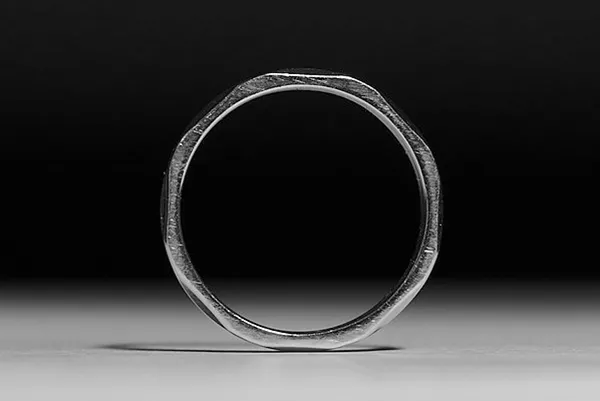

Growing up, Kristen Facciol, P.Eng, wanted to be a pediatrician—until her high school algebra teacher pointed out Facciol’s facility for math and physics and suggested engineering might be a good fit. Information about engineering careers wasn't as easily accessible back then as it is now, so she assumed engineers built bridges or conducted trains. But after talking with her teacher and others, she realized that engineering could open doors to vast and exciting job opportunities.
Facciol credits that teacher with sparking the incredible engineering career she’s had so far, and they remain in touch today.
“She was actually the one that gave me my iron ring when I graduated. Had I not had that conversation with her, and had she not given me that insight and personal experience, I probably wouldn't have considered it as a viable path. So I invited her to come back and present me with my ring, which was a nice full-circle event.”
That nudge eventually led Facciol to the Canadian Space Agency, where she is currently Training Supervisor, International Space Station and Gateway Robotics.
Finding her way to aerospace engineering
Facciol studied engineering science at the University of Toronto because it offered eight major options, including biomedical engineering (a nod to her previous dream of medicine). But aerospace courses and a second-year robotics engineering design project helped her realize where her true passion lay.
“I've always loved space. I've always been interested in it. I didn't really know what career options existed at the time, but those courses showed me, ‘This is something you can do. This is something you're good at.’”
After completing an undergraduate research scholarship at the University of Toronto Institute for Aerospace Studies (UTIAS), she began working at MDA Space in Montreal post-graduation. It was the only job she applied for, alongside applications to graduate programs and teacher’s college.
“Once the project that I first worked on was coming to an end, I was presented with an opportunity to be an embedded contractor at the Canadian Space Agency, doing engineering support of the robotic systems on the International Space Station. And I thought ‘okay, this is cool. I'm still early in my career. I'm going to try it out.’”
While still a contractor, Facciol got involved with the CSA’s robotics training program. She learned about the flight controller position and decided to make that her next goal.
“I remember telling the supervisor of the team at the time, ‘I'm going to work for you one day,’” she says. That day came sooner than expected, and after joining the CSA as a permanent employee, Facciol temporarily relocated to the Johnson Space Center in Houston, Texas, to train as a flight controller before returning to the CSA Robotics Mission Control Centre near Montreal.
Leading robotics operations on the ISS
The International Space Station, or ISS, is home to Canadarm2. Built in Canada, this robotic arm forms part of Canada’s contribution to the station, the Mobile Servicing System. It conducts exterior maintenance, moves payloads, assists with docking, and supports astronauts during spacewalks. Canadarm2 sometimes uses Dextre, a robotic “hand” also built by Canada, to perform tasks that previously required astronauts to conduct spacewalks, such as handling orbital replacement units—parts on the outside of the ISS that periodically wear out and need replacing.
Facciol’s job as a flight controller involved planning, supporting, and executing all operations undertaken by Canadarm2 and Dextre on the ISS. She says the best part of that job was serving as robotics lead for Phase 3 of the Robotic Refueling Mission in 2018.
“That was definitely the highlight of my career as a flight controller, because I was writing the procedures, I was making decisions on the way forward. We were operating 20 metres of robotic systems. When you think of Canadarm2, holding on to Dextre, operating these small interfaces on orbit to prove we could refuel a satellite that had already been launched—thinking toward what we might need to be able to do in the future and doing those proofs of concepts was really neat. Even when we ran into issues and had to change the plan in real time, being part of the team and having to do that problem-solving and troubleshooting was a lot of fun.”
Space science can inform and improve human health, both on Earth and in orbit
After her stint as flight controller, Facciol moved on to supervise the payload operations team, which supports astronauts conducting science experiments in space to examine the impact of the microgravity environment on the human body. She says research done in space can have implications for those of us who stay on the ground.
“Down here on Earth, we have a population that is increasingly aging, increasingly sedentary, and we need to find ways to mitigate that. So a lot of what you'll see in that type of population is very similar to what they experience on the ISS in terms of the way that their body adapts.”
Many of those experiments are focused on cardiovascular health, trying to determine how the human cardiovascular system adapts in space and what can be done to mitigate any negative effects, both during orbit and once astronauts return to Earth.
“The only reason we are able to do that research is because of the contributions [Canada has] made to the ISS in the form of these robotic systems. That gives us that opportunity to conduct that science and then to use the learning here on Earth.”
Stepping into the role of training supervisor
Facciol recently took on a new role as training supervisor for all robotics programs on the ISS and the planned Gateway lunar-orbit station, currently slated to come into operation no earlier than 2029. A major part of that job is developing an all-new training program for Canadarm3, which will be attached to Gateway.
“The neat thing about Canadarm3 is that Canada is now responsible for the operations and training entirely and the fact that I get to lead the team to do that is really cool.”
She says it's a huge challenge to build an entire training program from scratch—especially striking the balance between incorporating lessons learned from ISS and innovating as they move forward.
“Rather than saying, ‘Oh well, we're going to do it this way because we've always done it this way,’ this is our chance to make things better.”
What’s next?
Facciol doesn’t like to look too far into the future, but says she would love to see Canadarm3 through to its operational phase and beyond before moving on to other projects.
“There's a lot of opportunity to take what we learn from training on this program and expand it to other programs. We have Rover missions coming up. We'll have other initiatives that come in the future as well. So whether I stay involved from the training side or in some other way, I’d like to be a part of that.”
Facciol also remains passionate about teaching. She would like to expand that side of her work in the future and serve as a role model for those coming into aerospace engineering.
“I think it's really important to have those real-life examples. I don't think I had that as much as I would have liked when I was younger, and I just think it would be really neat to give that back to the community in some way.
“If you can't see it, you can't be it.”
The ultimate key to her success has been careful and methodical preparation in all aspects of her career.
“A lot of times in my life, I've said, ‘Oh, I'm so lucky I did this or that.’ But I also have to recognize that a lot of the time, I was preparing myself for those potential next steps. I was fortunate in terms of timing with when those opportunities were coming up. But I also tried to make sure I had all of the little puzzle pieces in place in case they came up… You don't always know what doors are ahead of you.”
Whenever those doors appear and wherever they lead, it’s clear that Facciol will be more than ready to open them and walk through— and leave them open for those that follow.
More in this series

The engineering profession's continuing commitment to EDI

Amaury Camarena is using engineering to protect and preserve Canada’s coastal regions

Canadian Engineering Grand Challenges: How Engineers Can Support Sustainable Development Goals

